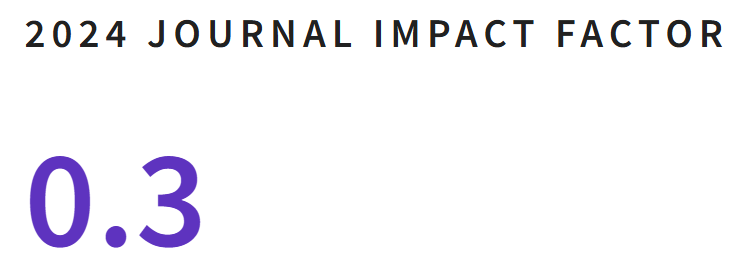Validation of the scale of counterproductive work behaviors in virtual environments in Mexico, 2022
DOI:
https://doi.org/10.35588/5jq0hb60Keywords:
Scale Validation, Counterproductive Work Behaviors, Virtual EnvironmentsAbstract
Counterproductive work behaviors (CWB) are those behaviors that affect the performance of individuals and the organization in general, so far analyzed in traditional work environments. The objective of the present study was to validate the CLC scale in virtual environments in a Mexican population. The English version was adapted to Spanish using the retranslation method. It was applied to a non-probabilistic sample of 332 teleworkers. By means of exploratory and confirmatory factor analysis, with the help of SPSS Statistics and AMOS Graphics, validity and reliability tests were carried out. The model presents a good fit (χ2/df = 1.957, CFI= 0.960, TLI= 0.950, RMSEA= 0.054, SRMR= 0.0536) with 23 items and 4 dimensions presenting adequate reliability indices (AO=.952, UIT=0.895, DP= 0.866, AI= 0.707). An initial proposal of the factorial structure of the CLC scale in virtual environments is presented for the Mexican population; with 4 factors: organizational sabotage or abuse, misuse of time, production deviation and interpersonal abuse. Further studies are required to validate the scale in specific and general contexts of Mexican teleworkers, as well as to use the present scale to validate the individual job performance variable in Mexican teleworkers.
Downloads
References
Baruch, Y., y Nicholson, N. (1997). Home, Sweet Work: Requirements for Effective Home Working. Journal of General Management, 23(2), 15-30. Doi: 10.1177/030630709702300202
Belzunegui-Eraso, A., y Erro-Garcés, A. (2020). Teleworking in the Context of the Covid-19 Crisis. Sustainability, 12(9), 3662. Doi: 10.3390/su12093662
Campbell, J., y McDonald, C. (2007). Defining a conceptual framework for telework research. ACIS 2007 Proceedings, 813–821. Doi: 10.1504/IJBIS.2009.024502
Cernas-Ortiz, D. A., y Wai-Kwan, L. (2021). Social connectedness and job satisfaction in Mexican teleworkers during the pandemic: The mediating role of affective well-being. Estudios Gerenciales, 37(158), 37–48. Doi: 10.18046/j.estger.2021.158.4322
Criscuolo, C., Gal, P., Leidecker, T., Losma, F., y Nicoletti, G. (2021). The role of telework for productivity during and post-COVID-19: results from an OECD survey among managers and workers. Doi: 10.1787/7fe47de2-en
Daniels, K., Lamond, D., y Standen, P. (2001). Teleworking: Frameworks for organizational research. Journal of Management Studies, 38(8), 1151–1185. Doi: 10.1111/1467-6486.00276
Escobedo Portillo, M. T., Hernández Gómez, J. A., Estebané Ortega, V., y Martínez Moreno, G. (2016). Modelos de Ecuaciones Estructurales: Características, fases, construcción, aplicación y resultados. Ciencia y Trabajo, 18(55), 16–22. Doi: 10.4067/S0718-24492016000100004
Ferrando, P. J., Lorenzo-Seva, U., Hernández-Dorado, A., y Muñiz, J. (2022). Decalogue for the Factor Analysis of Test Items. Psicothema, 34(1), 7–17. Doi: 10.7334/psicothema2021.456
Field, A. (2004). Research methods II factor analysis on SPSS. In University of Sussex, Brighton, United Kingdom (Issue September), 15 enero 2022. [En línea]. http://academicjournals.org/SRE/PDF/pdf2009/Sep/Peker.pdf%5Cnhttp://scholar.google.com/scholar?hl=enybtnG=Searchyq=intitle:Factor+Analysis+Using+SPSS#1%5Cnhttp://www.tandfonline.com/doi/abs/10.1080/10476210.2011.590588
Gabini, S., y Salessi, S. (2016). Validación de la escala de rendimiento laboral individual en trabajadores argentinos. Revista Evaluar, 16(1), 10–26. Doi: 10.35670/1667-4545.v16.n1.15714
Gentilin, M. (2020). Pasado, presente y futuro del Teletrabajo. Reflexiones teóricas sobre un concepto de 50 años. Researchgate.
Gruys, M. L., y Sackett, P. R. (2003). Investigating the dimensionality of counterproductive work behavior. International Journal of Selection and Assessment, 11(1), 30–42. Doi: 10.1111/1468-2389.00224
Hinkin, T. R. (1998). A brief tutorial on the development of measures for use in survey questionnaires. Organizational Research Methods, 1(1), 104–121. Doi: 10.1177/109442819800100106
Hoffman, B. J., Blair, C. A., Meriac, J. P., y Woehr, D. J. (2007). Expanding the criterion domain? A quantitative review of the OCB literature. Journal of Applied Psychology, 92(2), 555–566. Doi: 10.1037/0021-9010.92.2.555
Holland, S. J., Simpson, K. M., Dalal, R. S., y Vega, R. P. (2016). I can’t steal from a coworker if I work from home: Conceptual and measurement-related issues associated with studying counterproductive work behavior in a telework setting. Human Performance, 29(3), 172–190. Doi: 10.1080/08959285.2016.1160094
Koopmans, L., Bernaards, C., Hildebrandt, V., Van Buuren, S., Van Der Beek, A. J., y de Vet, H. C. w. (2013). Development of an individual work performance questionnaire. International Journal of Productivity and Performance Management, 62(1), 6–28. Doi: 10.1108/17410401311285273
Koopmans, L., Bernaards, C. M., Hildebrandt, V. H., De Vet, H. C. W., y Van Der Beek, A. J. (2014). Construct validity of the individual work performance questionnaire. Journal of Occupational and Environmental Medicine, 56(3), 331–337. Doi: 10.1097/jom.0000000000000113
Lievens, F., Conway, J. M., y De Corte, W. (2008). The relative importance of task, citizenship and counterproductive performance to job performance ratings: Do rater source and team-based culture matter? Journal of Occupational and Organizational Psychology, 81(1), 11–27. Doi: 10.1348/096317907X182971
Lloret-Segura, S., Ferreres-Traver, A., Hernández-Baeza, A., y Tomás-Marco, I. (2014). El análisis factorial exploratorio de los ítems: Una guía práctica, revisada y actualizada. Anales de Psicologia, 30(3), 1151–1169. Doi: 10.6018/analesps.30.3.199361
Mayo, M., Gomez-Mejia, L., Firfiray, S., Berrone, P., y Villena, V. H. (2015). Leader beliefs and CSR for employees: the case of telework provision. Leadership & Organization Development Journal, 37(5), 609–634. Doi: 10.1108/LODJ-09-2014-0177
Mılası, S., González-Vázquez, I., y Fernández-Macías, E. (2021). Telework Before the Covid-19 Pandemic: Trends and Drivers of Differences Across the Eu. Oecd Productivity Working Papers, 21(21), 1–18. https://doi.org/10.1787/24139424
Muñiz, J., Elosua, P., y Hambleton, R. K. (2013). Directrices para la traducción y adaptación de los tests: Segunda edición. Psicothema, 25(2), 151–157. Doi: 10.7334/psicothema2013.24
Nemteanu, M. S., Dabija, D. C., y Stanca, L. (2021). The Influence Of Teleworking On Performance And Employees’ Counterproductive Behaviour. Amfiteatru Economic, 23(58), 601–619. https://www.ceeol.com/search/article-detail?id=973321
Omar, A., Vaamonde, J. D., y Delgado, H. U. (2012). Comportamientos contraproducentes en el trabajo: diseño y validación de una escala. Diversitas: Perspectivas en Psicología, 8(2), 249–265. Doi: 10.15332/s1794-9998.2012.0002.04
Quero, M. (2010). Confiabilidad y coeficiente Alpha de Cronbach. Revista de Estudios Interdisiplinarios En Ciencias Sociales, 12(2), 248–252. Recuperado de: https://www.redalyc.org/pdf/993/99315569010.pdf
RaišienÄ—, A. G., Rapuano, V., DÅ‘ry, T., y VarkuleviÅ«tÄ—, K. (2021). Does telework work? Gauging challenges of telecommuting to adapt to a “new normal”. Human technology, 17(2). Doi: 10.14254/1795-6889.2021.17-2.3
Ramos-Villagrasa, P. J., Barrada, J. R., Fernández-del-Río, E., y Koopmans, L. (2019). Assessing job performance using brief self-report scales: The case of the individual work performance questionnaire. Revista de Psicología del Trabajo y de las Organizaciones, 35(3), 195-205. Doi: 10.5093/jwop2019a21
Spector, P. E., Fox, S., Penney, L. M., Bruursema, K., Goh, A., y Kessler, S. (2006). The dimensionality of counterproductivity: Are all counterproductive behaviors created equal? Journal of Vocational Behavior, 68(3), 446–460. Doi: 10.1016/j.jvb.2005.10.005
Vega, R. P., Anderson, A. J., y Kaplan, S. A. (2015). A Within-Person Examination of the Effects of Telework. Journal of Business and Psychology, 30(2), 313–323. Doi: 10.1007/s10869-014-9359-4
Ventura-León, J. luis, y Caycho-Rodríguez. (2017). El coeficiente Omega: un método alternativo para la estimacion de la confiabilidad. Revista Latinoamericana de Ciencias Sociales, Niñez y Juventud, 15(1), 625–627. Recuperado de: https://www.redalyc.org/journal/773/77349627039/html/










